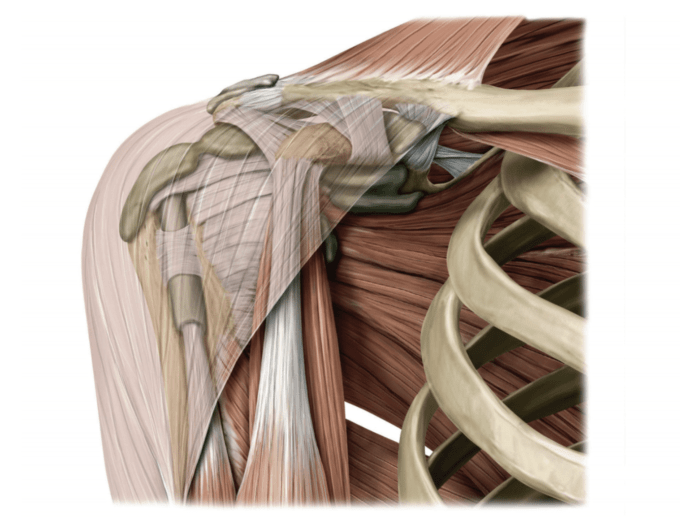Tools to Unlock Healthy Shoulder Mobility
Discover the surprising impact of the nervous system on the shoulder position, and explore passive and active shoulder mobilization techniques in this 30-minute LIVE learning experience with Therapeutic Specialist & Senior Teacher, Rachel Land.
Ready for more? Join our online, 55hr Shoulder Intensive Trainings to gain the tools to work with common injuries and dysfunction of the shoulder!

Advance your understanding of shoulder structure, anatomy and function, and learn to utilize yoga therapeutically to support healthy ROM, posture, and more.
Led by Tiffany Cruikshank & Yoga Medicine® Therapeutic Specialist Rache Landl, this 55-hr online intensive training takes a deeper look at the anatomy and biomechanics of the shoulder joint as a basis for learning to effectively evaluate and work with a variety of ailments, including stiffness, impingement, frozen shoulder, tendonitis, forward-head posture and more.
We’lll cover practical principles and work for the shoulders to decrease patterns contributing to tension and pain, and increase freedom of movement. Expect insights and applications you can immediately put to use, as well as a subtler understanding of how breath, posture and even emotional state affect this area of the body.
If you’re a teacher dedicated to a higher standard of learning and looking to develop an extensive knowledge of the shoulder joint that you can immediately apply to both your teaching and personal practice, this training is for you!
Throughout the Shoulder Anatomy, Dysfunction and Application Training, you’ll learn:
- Shoulder structure and bony anatomy
- The major muscles of the shoulder girdle and the movements they’re responsible for
- How strength and flexibility (or lack of!) in these structures affect range of motion
- Therapeutic movements to remove stiffness and pain and support freedom and function
- How to optimize everyday movement to avoid shoulder pain, injuries, and other ailments
- How yoga practices can support healthy sitting and posture to protect the long-term function of the neck and shoulders
- How to account for anatomical variances when creating class sequences and individual treatment plans
- The role of prevention, durability, and resistance training in creating resilience












